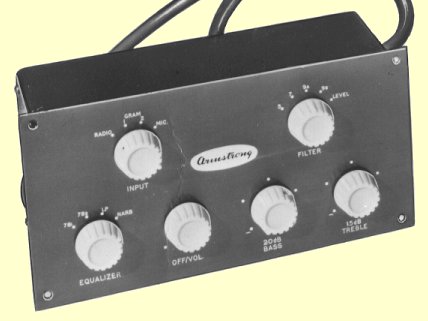

Specifications for A10 Mk 1 Power Amplifier
| |||
| Rated Output | 10 Watts (Output transformer tappings for 2-4 and 11-16 Ohms) | ||
| Frequency Response | 15Hz - 30kHz ±1dB | Distortion | <0·1% |
| Input sensitivity | 250 mV for full rated output | Output Valves | 6L6 or EL37 ultra-linear |
| Noise | -80dB | Feeback | 26dB |

